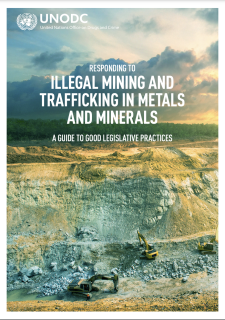
Illegal mining occurs both on the surface and underground, in closed mines and abandoned mines, and sometimes even at operating mines. It is intertwined with trespassing on active or decommissioned mining sites, and it can take place in protected areas, in natural parks, at historical sites and on indigenous lands.
Inconsistent and often inadequate legal frameworks, along with fragmented enforcement, are among the major obstacles to curtailing illegal mining and trafficking in metals and minerals. Some national laws have gaps in the criminalization of such illegal mining and trafficking, contain insufficient penalties for those crimes and do not reflect international recommendations and best practices.
The primary target audience of the guide consists of policymakers, legislators and legislative drafters. It may also be of relevance to other stakeholders, such as those representing civil society organizations, academic institutions and the private sector.
